Wanted something ricy and spicy. Had a bit of frozen pork mince in the freezer, from a Chinese butcher. So I started thinking about Thai larb, the pork cooked down with fish sauce and chilli, and whacked with lime juice. Then halfway through that thought, I pinched a few ideas from a chef’s cook book for nasi goreng, and sort of threw it all together.
Not terribly authentic, and not amazingly original, and I will probably burn in some special circle of hell for plagiarists and thieves. But gee, it was good.
The original recipe in Junda Khoo’s Ho Jiak book (which is turning out to be one of the greats) actually looks like this.
Nasi Goreng Pattaya is essentially an omelette-topped fried rice that Junda says originated from Thai hawker stalls in Malaysia, packed with prawns, fish balls, fishcake slices and garlic. To serve, he lines a bowl with a fine omelette, tips in the fried rice, folds up the omelette and inverts the package onto a serving plate before swathing with sweet chilli sauce, and scattering with fried shallots and chopped spring onions. Definitely an idea worth stealing.
I didn’t have a lot of those ingredients. Oh wait, Terry has fish balls in the fridge for his noodle soups, and kamaboko fish cake for his miso soups. I’ll use the pork mince intead of prawns, but soak a few dried shrimp as well.
Sorry, Junda, I stole your recipe and covered my tracks so I couldn’t be traced. But what I like is how you credited the Thai hawker chefs with the inspiration - just as they were inspired to fuse elements of their traditional Thai cooking with ideas from their new home in Malaysia. And so it goes. In other words, none of us are thieves. You don’t steal from friends.
One of our most Malaysian and yet most creative and inspiring chefs, Khoo is interesting on the subject of authenticity.
“A lot of people come in and try something I’ve cooked and tell me it’s not authentic,” he tells me. “I used to always defend myself, whereas now I’m at the stage where I tell them how and why I have cooked the dish, and ask them if it was delicious.”
When they say yes, it was delicious, he says, “Exactly. I’m not trying to be modern, or traditional, or authentic. Just delicious”.
But in truth, what he does is authentic, to him. And that’s enough.
Which brings me to Austin Kleon, and his book Steal Like An Artist (10 Things Nobody Tells You About Being Creative), which I devoured when it came out in 2012.
Austin is on Substack now (all the good people are on Substack now, don’t you know), but he has stonkingly good advice for creatives and anyone in business. Indeed, anyone.
His suggestion to steal like an artist isn’t an invitation to copy somebody’s masterpiece (or recipe) but to make it your own, or at least look at the thinking behind it, and make that your own. It’s in that process, he says, that you find your own originality. (“Art is theft” – Pablo Picasso).
That means we all have permission to respond, react and change, to be inspired, to re-do and re-make in our own image, to make it our own.
Legal disclaimer, in case anybody wants to take me to court: I am not condoning professionals copying or plagiarising the work of others, which is just mean and nasty. But I love how a good recipe goes out into the world and takes on a life of its own; perhaps its true legacy.
So here’s what some might call stolen property. Others might say it’s an original work of art. I just say it’s delicious.
MINCED PORK FRIED RICE WITH FISH BALLS
2 cups cooked rice, spread out to dry
1 tbsp dried shrimp
2 tbsp vegetable oil
2 eggs, beaten with salt and pepper
2 garlic cloves, finely sliced
1 mild red chilli, cut into matchsticks
300g minced pork, fatty rather than lean
3 fish balls, sliced
1 tbsp chilli sauce, your preferred
2 tbsp fish sauce
1 tbsp soy sauce
1 tsp sugar or palm syrup
Half tsp salt
6 spring onions, chopped
To serve - sweet chilli sauce, fried shallots
Garnish - sliced cucumber and truss tomato
Soak the dried shrimp in hot water for an hour then drain.
Heat 1 tsp of vegetable oil in a frypan, pour in the beaten eggs, and cook as for an omelette, drawing back the edges to help the centre cook.
When set but still clammy on top, slide off into a bowl that will hold the finished rice.
Heat remaining oil in the frypan, add garlic and chilli and fry for 30 seconds.
Add the minced pork and fry until no longer pink.
Add the sliced fish balls, shrimp, and some of the spring onions and cook for 1 minute.
Scatter the rice on top, then toss well over high heat, as you add the chilli sauce, fish sauce, soy sauce, sugar and salt.
Add almost all the spring onions, tossing well, then tip into the omelette-lined bowl.
Place a serving platter on top, and flip both bowl and plate over so that you can lift the bowl to reveal the omelette-topped fried rice.
Stripe with sweet chilli sauce, scatter with fried shallots and remaining spring onions, and tuck in cucumber and tomato on the side.
To serve, cut a big slash in the omelette and part the egg to show the fried rice.
Serves 2, or more if part of a few shared plates.
# Icy-cold wedges of iceberg lettuce would be good with this.
# You might like to save the shrimp-soaking water and add a dash of it towards the end of frying if you think it looks a bit dry.
# Herbs, by all means – coriander, mint, basil.
# Some folks add a good whack of tomato sauce (ketchup) as well.
# To be honest, I simply tipped the fried rice on our plates, cut the omelette in half and placed it on top (steal that if you like).
Thanks for dropping by! And thanks for your comments and suggestions.
Thanks to Junda Khoo for the inspiration. Go to Ho Jiak if you can, or get his book – it’s a great mix of hawker favourites such as nasi lemak and char kway teow, and home-style amah (grandma) dishes and his own third-culture dishes such as laksa dumplings, which you HAVE to have if you get to one of his restaurants.
Ho Jiak: A Taste of Malaysia by Junda Khoo Hardie Grant Books. Photo Alana Dimou.
Thanks also to Austin Kleon for all the inspiration, encouragement and permission to find our own path.
Special thanks to Terry for allowing me to steal his stash of fish balls and fish cake. It’s a hotbed of criminality around here, I tell you.
I would like to acknowledge the traditional owners of the lands and waters upon which I work, live, cook and play; the Gadigal people of the Eora Nation. Thank you for sharing your culture, traditions, knowledge, spirit, art, music, humour and food traditions, allowing us all to experience a greater sense of belonging in this ancient land.
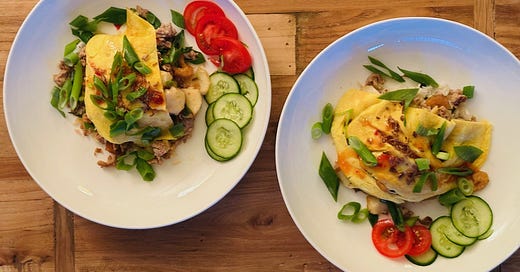



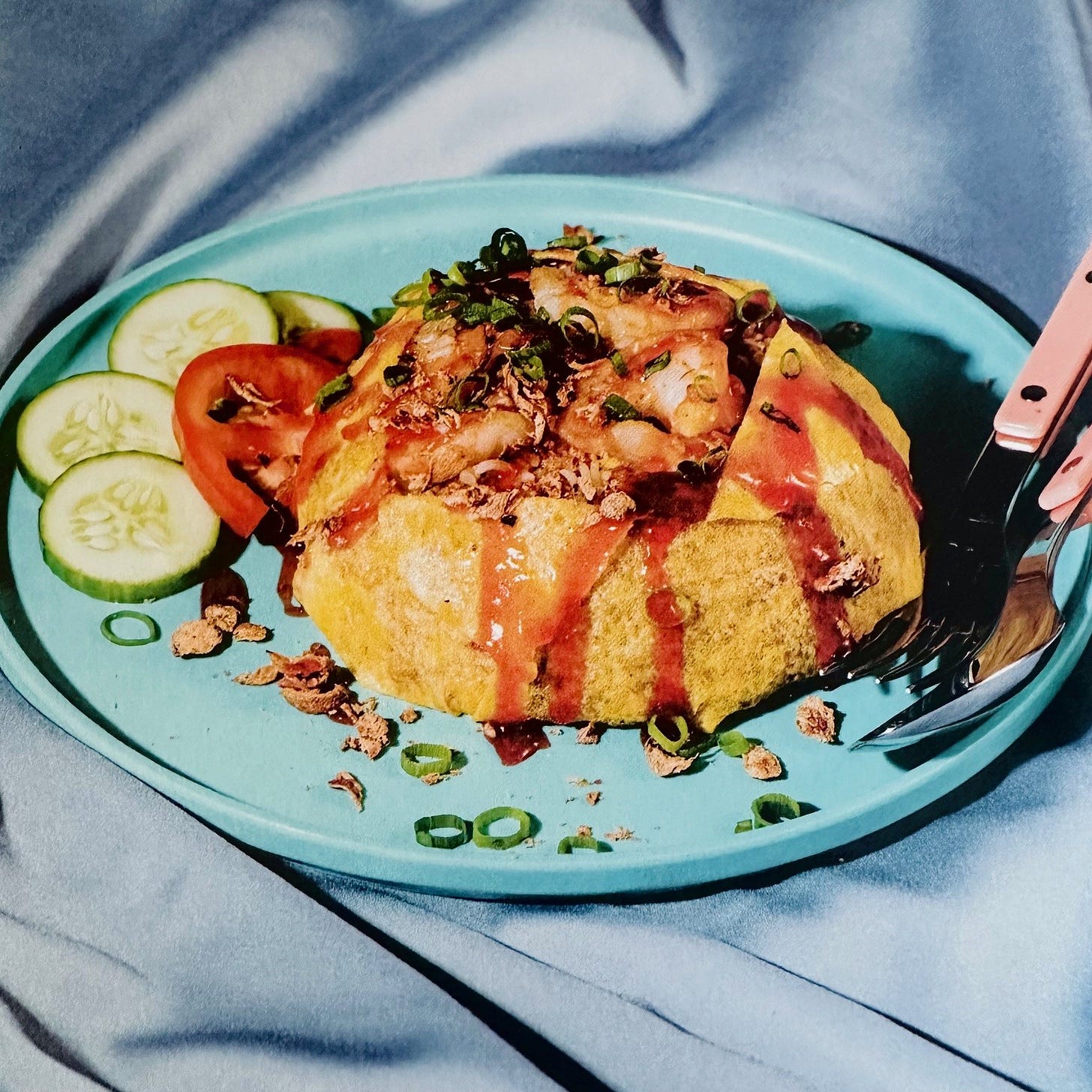
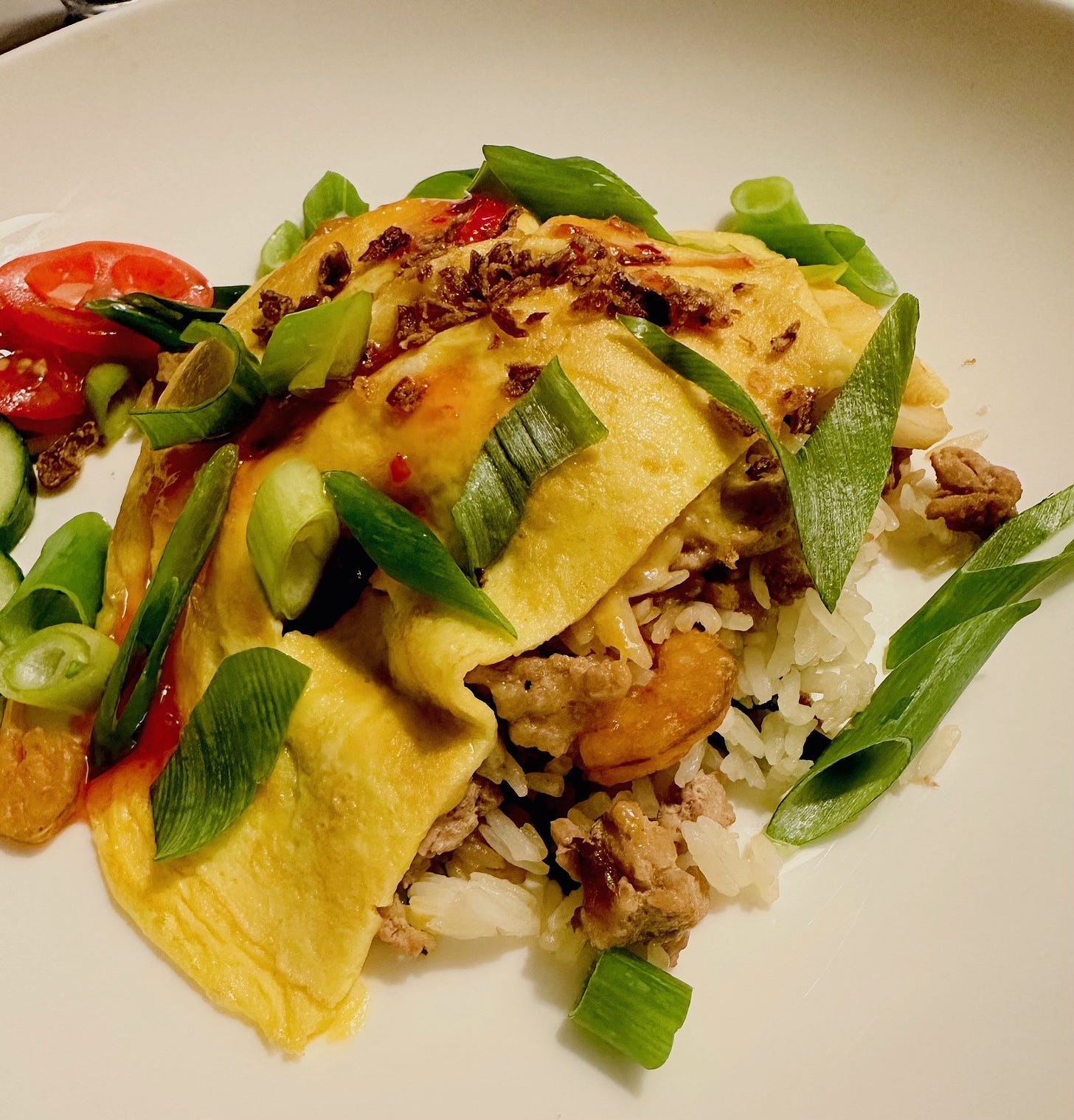
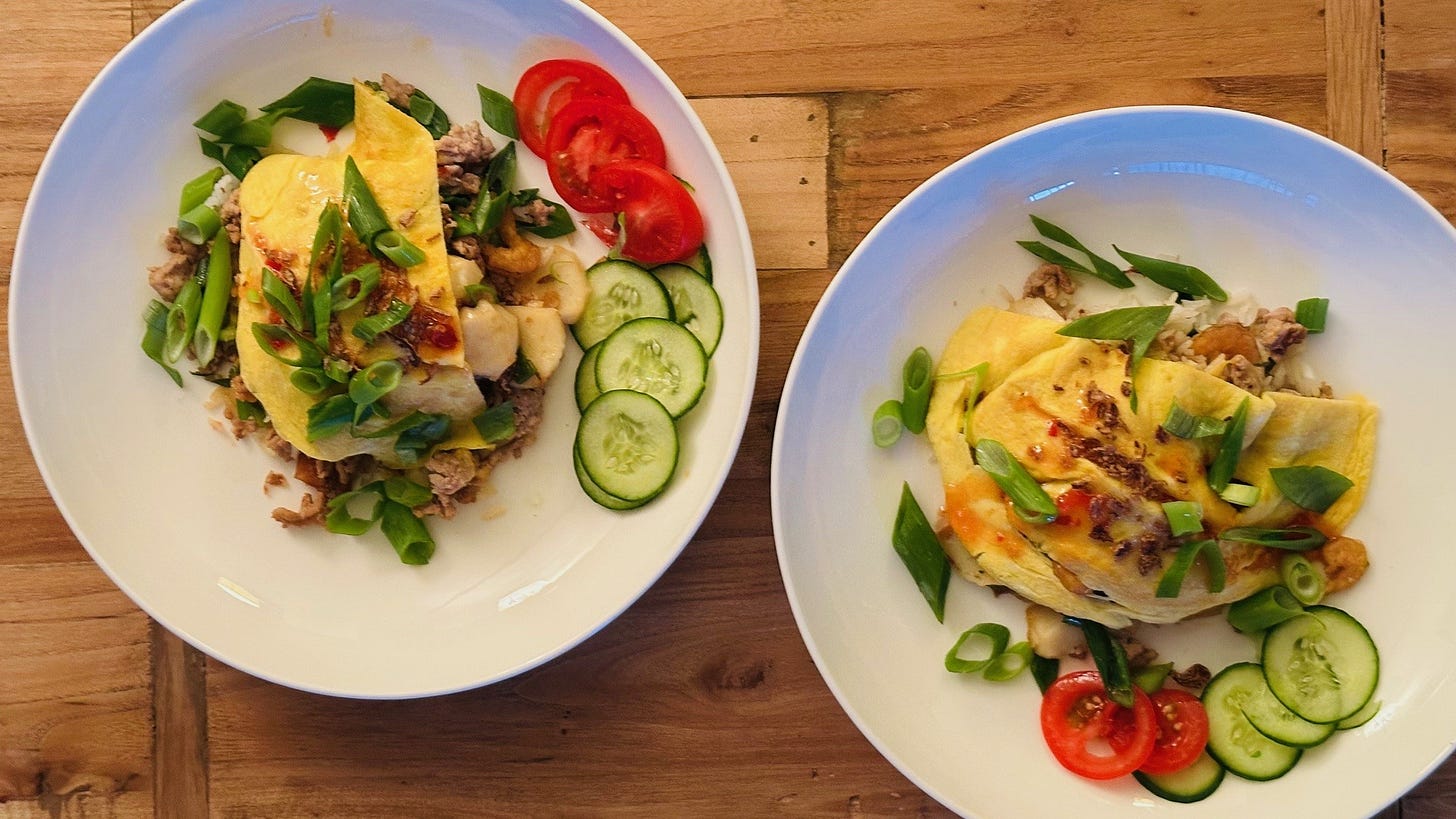
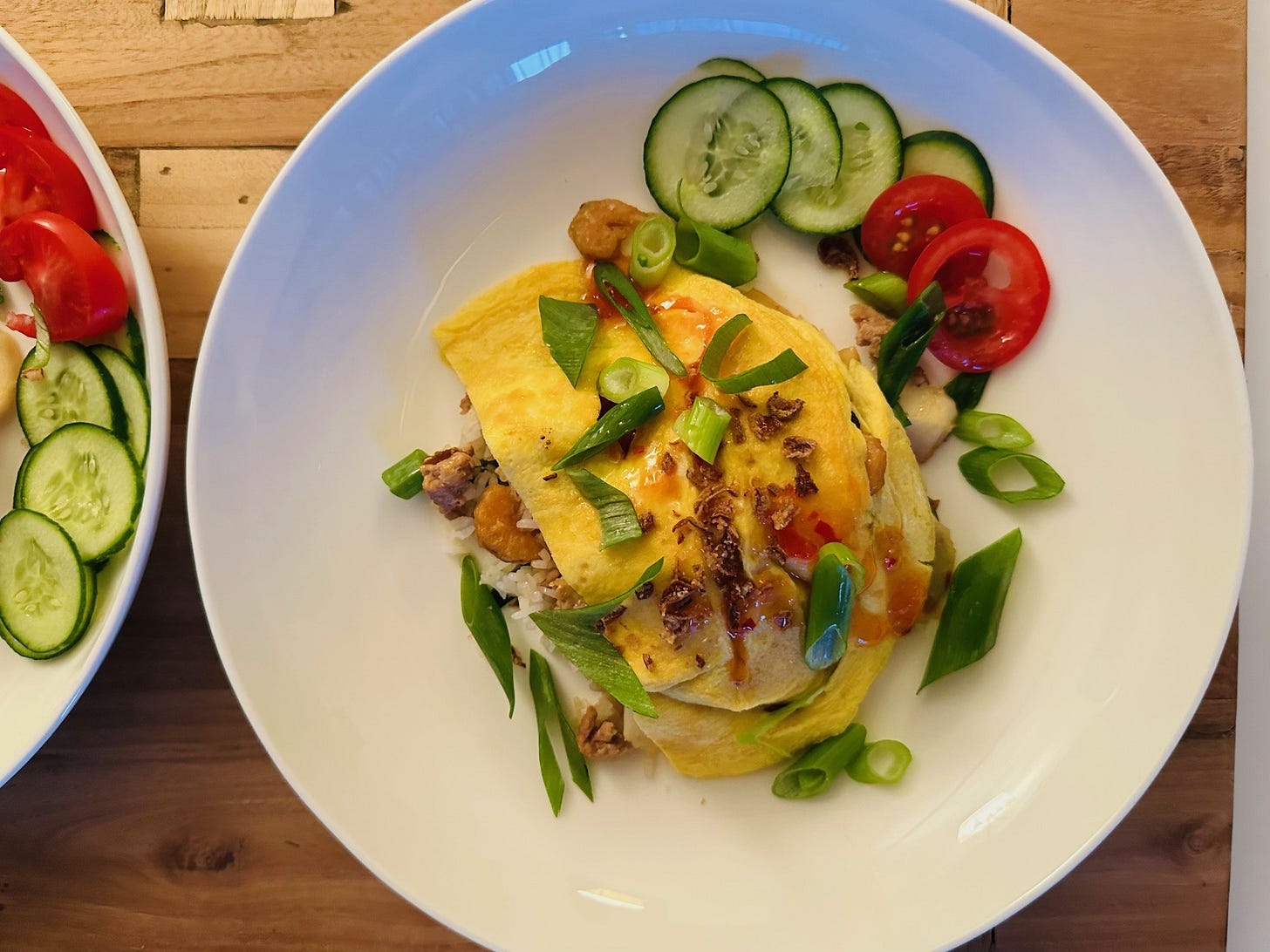

So I liked your green pie last year and made it my own. I do not like silverbeet and I grow a heap of perennial spinach - so it's a spinach pie - and inspired by Nagi Maeheshi's spanakopita, I add cayenne pepper, nutmeg, and black pepper. Very proud of "my green pie" especially when the neighbour's hens are laying! And very grateful for your inspo!
I’ve cooked last week’s zucchini coins twice already, which is a lot since I only do half the cooking and January isn’t a big cooking month - thank you. Home cooks often borrow or steal recipes from each other, particularly in traditional cuisines, and long before cookbooks or the internet revolutionised communication. My mum’s pastitsio was a bit different to her sisters-in-law, and mine is a combination of theirs and that of the estimable Tessa Kiros. Pinching and tweaking serve practicality and deliciousness.